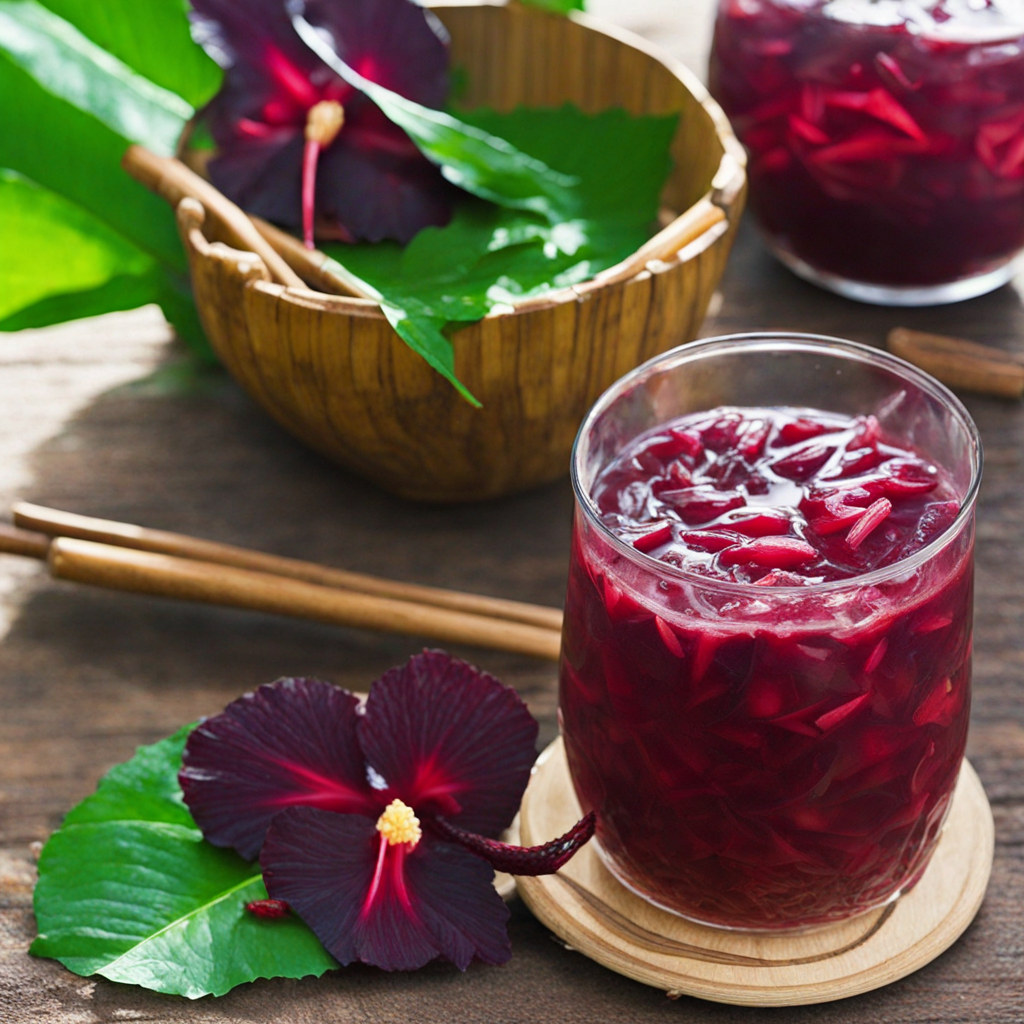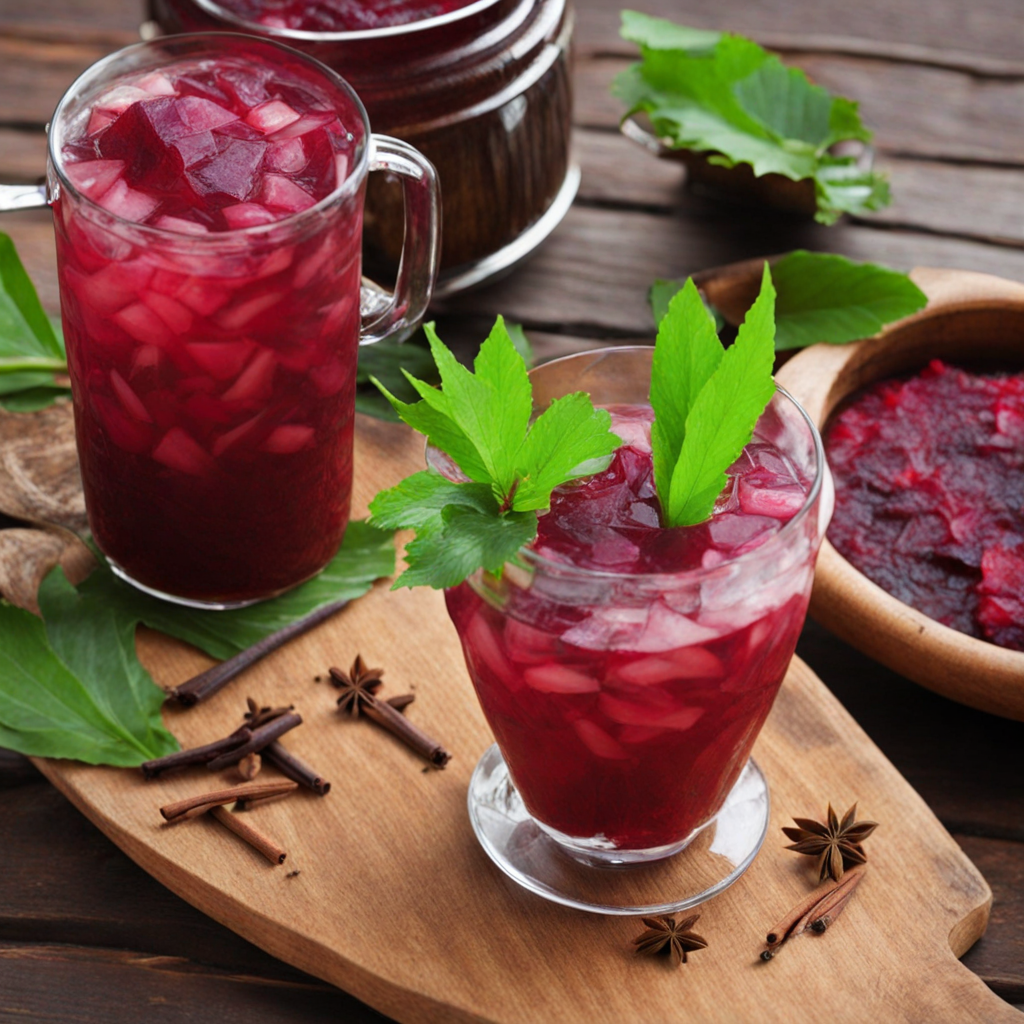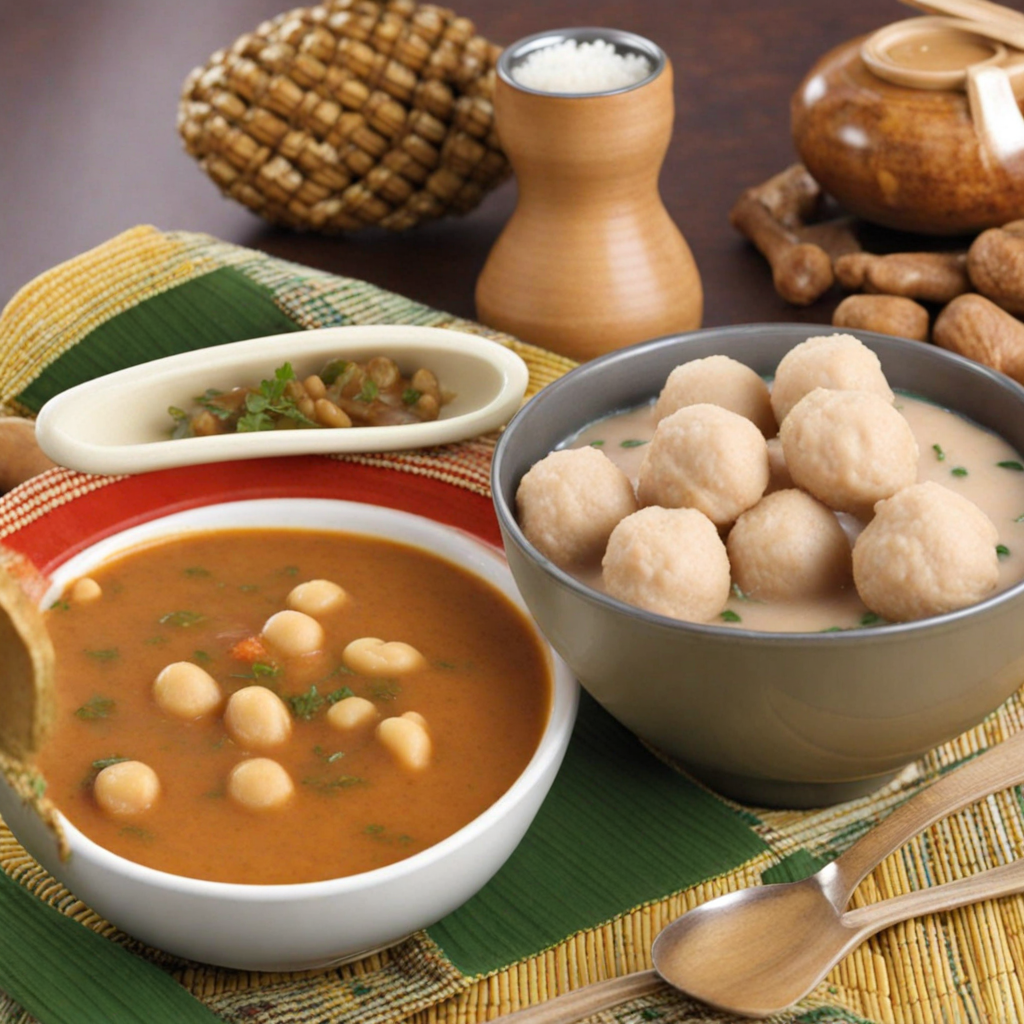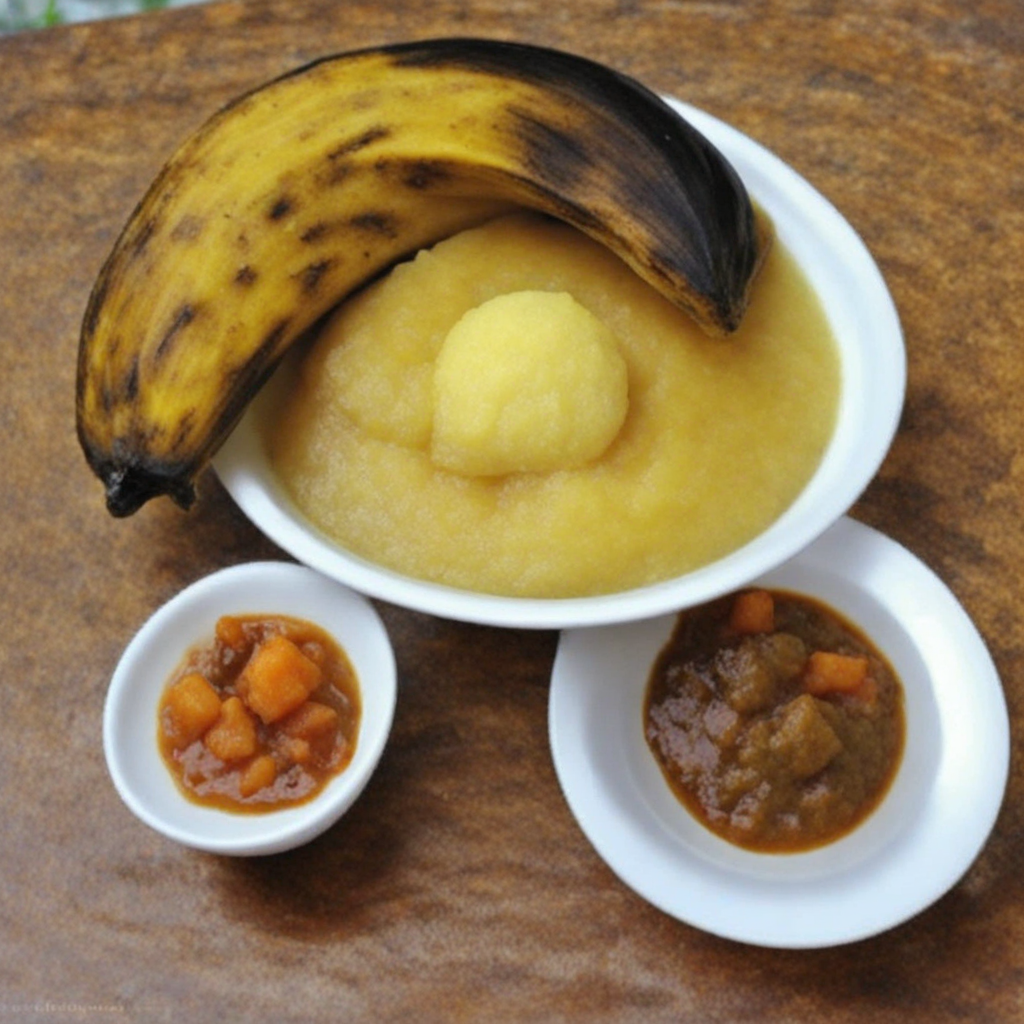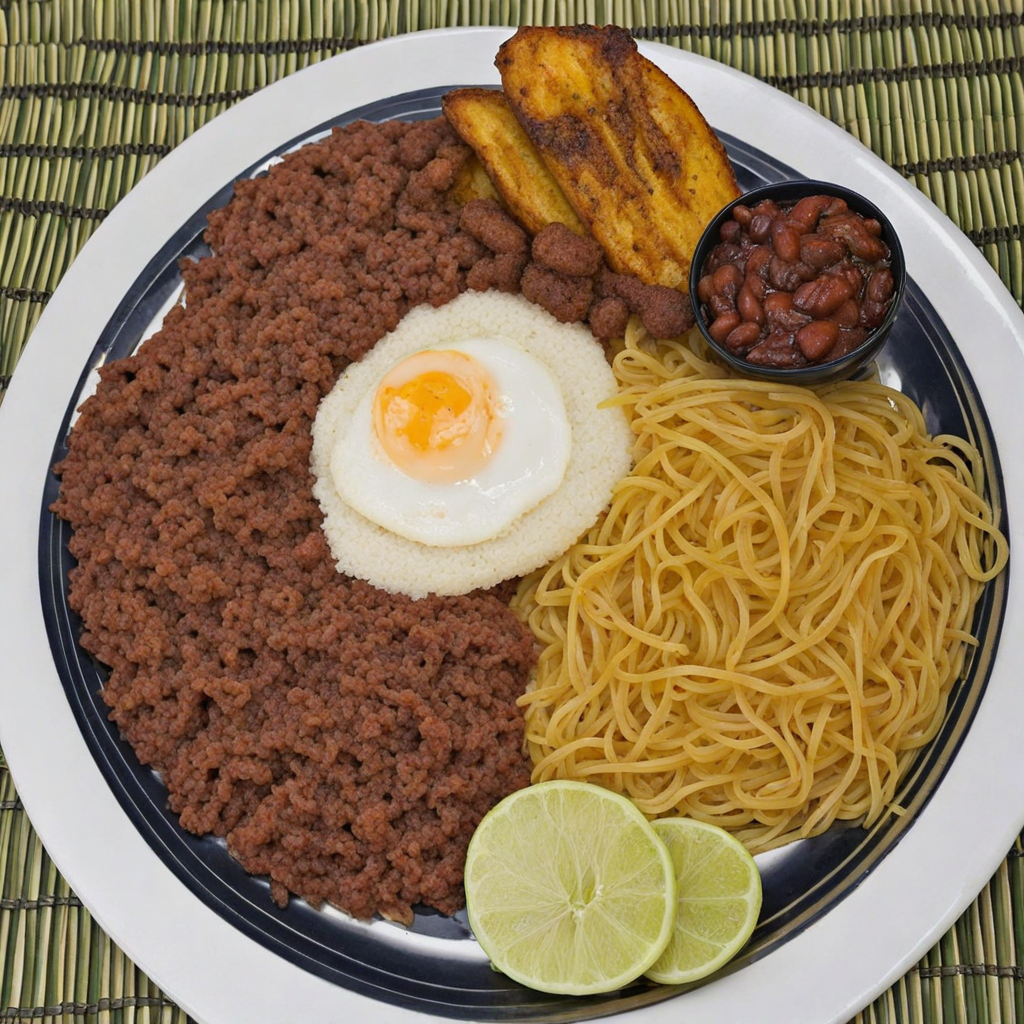Sobolo
Sobolo, also known as hibiscus tea, is a vibrant and refreshing beverage that hails from Ghana, made primarily from dried hibiscus flowers. The process begins with steeping the dried petals in hot water, releasing their deep crimson color and tangy flavor. The infusion is then sweetened with sugar or honey and often enhanced with spices like ginger or cloves, creating a delightful balance of sweetness and tartness. This drink is not only visually captivating but also offers a unique flavor profile that tantalizes the taste buds, making it a popular choice for both locals and visitors alike. In Ghana, Sobolo is not just a drink; it’s an experience often enjoyed during special occasions, family gatherings, and festive celebrations. The vibrant hue of the drink is a feast for the eyes and serves as a symbol of hospitality. Served chilled, it becomes a perfect refreshment in the hot tropical climate, quenching thirst while offering a burst of flavor that invigorates the senses. The addition of ginger gives it a slight spiciness, while the floral notes of hibiscus provide a fragrant aroma that invites you to savor each sip. What sets Sobolo apart is its versatility; it can be enjoyed on its own or paired with various dishes, enhancing the overall culinary experience. Some people even experiment by adding fruits like pineapple or lime to create a fruity twist, further diversifying its flavor. Whether you are seeking a new beverage to complement your meal or looking for a unique drink to share with friends, Sobolo promises an intriguing taste journey that showcases the rich culinary heritage of Ghana.
How It Became This Dish
The History of Sobolo: Ghana's Refreshing Hibiscus Drink #### Origins and Ingredients Sobolo, a vibrant and refreshing drink, has its roots deeply embedded in the rich agricultural heritage of Ghana. The primary ingredient—hibiscus flowers—has been utilized for centuries across various cultures. The hibiscus plant, known scientifically as *Hibiscus sabdariffa*, is believed to have originated in Africa and Asia, where it has been cultivated for both its culinary and medicinal properties. In Ghana, sobolo is made by steeping dried hibiscus petals in boiling water, which infuses the water with a deep red color and a tangy flavor. Traditionally, the drink is often sweetened with sugar, honey, or natural sweeteners, and may be enhanced with spices such as ginger, cloves, or mint to add complexity to its flavor. This beverage is enjoyed chilled, making it a perfect thirst-quencher in the hot West African climate. #### Cultural Significance Sobolo holds a special place in Ghanaian culture and social gatherings. It is more than just a drink; it is a symbol of hospitality and community. In many Ghanaian homes, serving sobolo to guests is a customary practice that embodies warmth and welcome. The drink is often enjoyed during celebrations, parties, and special occasions, where it is served alongside traditional dishes. Moreover, sobolo is often associated with festivities, particularly among the Akan people of southern Ghana. It is common to see sobolo at weddings, naming ceremonies, and festivals, where it plays a vital role in the celebratory atmosphere. The drink is not just a beverage but a cultural artifact that brings people together, fostering a sense of unity and shared identity. #### Development Over Time The evolution of sobolo reflects broader changes in Ghanaian society and culinary practices. Historically, hibiscus was used by indigenous communities not only for its flavor but also for its health benefits. Rich in vitamin C and antioxidants, hibiscus tea has been linked to various health advantages, such as lowering blood pressure and aiding digestion. As awareness of these benefits grew, so did the popularity of sobolo, both in households and in local markets. In the 20th century, with increased urbanization and globalization, the production and consumption of sobolo began to evolve further. Enterprising individuals started selling sobolo in various forms—from street vendors to more established beverage companies. This commercialization allowed for the mass production of sobolo, making it accessible to a wider audience. Today, it is common to find bottled sobolo in supermarkets and convenience stores, often marketed as a healthy alternative to soft drinks. The modern iterations of sobolo have also seen creative innovations. Flavors can vary widely, with some vendors incorporating fruits like pineapple, watermelon, or orange to create unique blends. The drink’s versatility has made it a canvas for experimentation, attracting a younger demographic eager to explore new tastes while staying connected to traditional roots. #### A Symbol of Resilience The history of sobolo is not just a tale of culinary evolution; it also reflects the resilience and adaptability of Ghanaian culture. In times of economic hardship, local communities have often turned to traditional ingredients like hibiscus to create affordable and nutritious beverages. The cultural significance of sobolo has remained steadfast, even as global influences permeate the food landscape. Moreover, sobolo serves as a reminder of the importance of preserving local agricultural practices. The hibiscus flower is typically cultivated by smallholder farmers, and supporting the production of sobolo can contribute to sustainable livelihoods in rural areas. As the demand for natural and healthy beverages grows worldwide, sobolo stands poised to take its place on the global stage, showcasing the richness of Ghanaian culinary heritage. #### Contemporary Popularity and Global Recognition In recent years, there has been a renewed interest in traditional beverages like sobolo, driven by a growing health-conscious consumer base. As people become more aware of the harmful effects of sugary drinks, sobolo—a naturally low-calorie option rich in nutrients—has gained traction. The drink's vibrant color and unique flavor profile have also made it a popular choice for mixologists, who incorporate it into cocktails and mocktails. Internationally, sobolo is beginning to garner attention as part of the broader trend of exploring African cuisine. Food enthusiasts and culinary experts are recognizing the value of traditional beverages, with sobolo often featured in discussions about the gastronomic offerings of West Africa. This newfound interest has the potential to elevate sobolo from a local delight to a globally recognized drink, encouraging cultural exchange and appreciation. #### The Future of Sobolo As sobolo continues to evolve, its future looks promising. The fusion of traditional recipes with modern culinary techniques opens up exciting possibilities for innovation. Plant-based diets and sustainability trends are likely to keep the demand for sobolo high, as consumers seek out natural and locally sourced products. Furthermore, initiatives promoting local ingredients and traditional recipes can help safeguard the cultural heritage surrounding sobolo. Education about the health benefits and cultural significance of hibiscus drinks can encourage younger generations to appreciate and preserve this aspect of Ghanaian identity. In conclusion, sobolo is not merely a refreshing drink; it is a testament to Ghana's rich culinary history, cultural significance, and resilience. From its traditional roots to its contemporary adaptations, sobolo encapsulates the spirit of community and the celebration of Ghanaian heritage. As it continues to gain recognition on the global stage, sobolo is poised to serve as a bridge connecting the past with the future, inviting everyone to partake in its vibrant legacy.
You may like
Discover local flavors from Ghana


